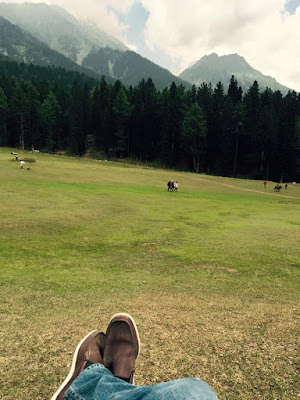57 Carlos Celdran Tour of Intramuros, Manila
Carlos Celdran’s 3-hour Intramuros Tour is one of the few
things that I can recommend heartily in the almost-negligible ‘to-do’ section
of Manila. It’s not five star, but it is definitely something one must do when
in the city.
Before visiting this tour, I had been to Fort Santiago in my
earlier trips, and had read some amount of history of the place. But there is a
difference between reading and seeing it unfurl in front of you in the form of
a performance, howsoever poignant the story is.
And Carlos has a way to make the story come alive. He and
his troop of 4 locals, who carry his bags and costumes and paraphernalia around
the tour, and collect money, and look after the guests. But the star of the
show is only Carlos.
And what a star. Carlos has a way of telling you stories, like
an older friend confiding in you and telling you some naughty secrets, all the
time turning around looking to see if the teacher is at earshot. Like how the Spanish
genes that the people from Manila have, have all come from men – men who had no business
of spreading those genes in the first place (the fryers). His humor is
sometimes silly, sometimes scalding, but mostly delightful. He sings full songs,
cries, throws candy in the air, and generally holds your attention for the full
time. It is all rehearsed, but it comes so naturally. It is truly a brilliant
walking act.
What is perhaps most intriguing is the fact that one keeps
wondering where his act ends and where one sees him truly. That he cares deeply
about the city and its people is quite clear. But about the other parts, he just
lets you keep guessing, or figure things out on your own -- like about the Spanish king, about Jose Rizal
who was made a national hero by the Americans and not by the locals, about the
Americans and so on. He seems to have a love-hate relationship with all these things, just like most locals do. The one thing that he clearly and very publicly detests is the theocracy
that ruled the city for over 300 years. It is a cerebral tour, and makes one
wonder how he manages to hold the attention of the younger walkers as well as
the adults for the entire time.
There is a motley group in my tour, this time about 100,
being a long weekend. Almost two thirds of it are locals. Citizens of the city,
come to see their own city. They sing the national anthem with him; they laugh at his jokes; they roll their eyes when he suddenly brings out some surprise that they had never thought about (for example, the word "tagalog", the name of the local language, originally meant 'people of the river' - and that river is the Pasig river on which the fort stands, on which the group is now standing. Wow!).
He yells at them to get out of their glass chambers
and malls; he pleads them to revive their and the city's 'soul'; and then in the end he feeds
them halo-halo and they all go back feeling happy. Hopefully some of them would
start looking at their city in a different light. And I keep wondering most of the time -- if only we have something like this back in India. It will be so great. We have a lot of history, but most of it is far too sensitive now for anyone
to touch the material without offending someone or the other, which is such a
shame. Anyway, that is for a later time.
Of course, this is not an all-star review. There are some
parts that could be done away with, though. For example, there is a lot of
yelling and screaming, a lot of it towards the catholic church, and I understand
that some of it comes from being close to and passionate towards the subject.
But it gets a bit repetitive after a while.
So does the ‘yeah … that’s it’ routine. He routinely climbs
up a wall, makes a grand pronunciation about something and then just drops it. And
I know, I get it. The place is not Taj Mahal. I know it because I have seen Taj
Mahal 17 times. After the 3rd time, I also started doing that ‘yeah …
that’s it’ kind of thing. But after a while this gets repetitive.
If I have to find holes, there seemed to be also some curious omissions, like the Japanese bunkers and the bomb shelters, although there is a 20-minute film and show on the 1945 Manila Massacre. Also, the narrative
seems to finish around 1960s’s. There is not much that he brings about the
recent history and current events, which could have made the story more
relatable. But now I am nit-picking. Overall a great evening, well-managed and
superbly entertaining.
The purpose of history is to make one feel empathy towards
other people, those who have lived in a totally different condition and at a
total different time. As an Indian, for most of my time I am either blissfully
unaware or turgidly jingoistic about my history, and generally apathetic about
anyone else’s. Carlos Celdran, at least for a split second inside his bunker
tunnel, made me care for a hundred thousand people from the city of manila who
died as collateral damage in the aftermath of WWII in the crossfire between the
Americans and the Japanese. He made me see this place in a new light, and threw in the occasional laughs for free. And for
that, I am thankful to him.
Shreekant
13 May 2018










Comments